AP Psychology - Unit 1B Test on States of Consciousness and Sensation
1/170
There's no tags or description
Looks like no tags are added yet.
Name | Mastery | Learn | Test | Matching | Spaced |
|---|
No study sessions yet.
171 Terms
(States of Consciousness) What is Consciousness? - Debate amongst schools of thought
Example: Behaviorists - observable, measurable behavior; the way I know what you’re thinking is through your behaviors
New technology is reviving this subject (all neuroimaging helps us resolve this debate)
(States of Consciousness) What is Consciousness? - Consciousness
Consciousness: our awareness of ourselves and our environment
Active mode: currently, humans are in this mode
e.g. we are actively thinking, planning, and decision-making
BUT our brains get tired of paying attention
Passive mode: if the brain doesn’t get a break, your brain goes into this mode where the mind is elsewhere other than where it’s supposed to be to give itself a break
e.g. daydreaming and sleeping (NOT fully unconscious because brain is still aware of outside environment → why we hear an alarm to wake up, dreaming)

(States of Consciousness) Altered States of Consciousness - Naturally occurring altered states of consciousness
Anything other than when you are awake/alert
Sleeping
Dreaming
Daydreaming
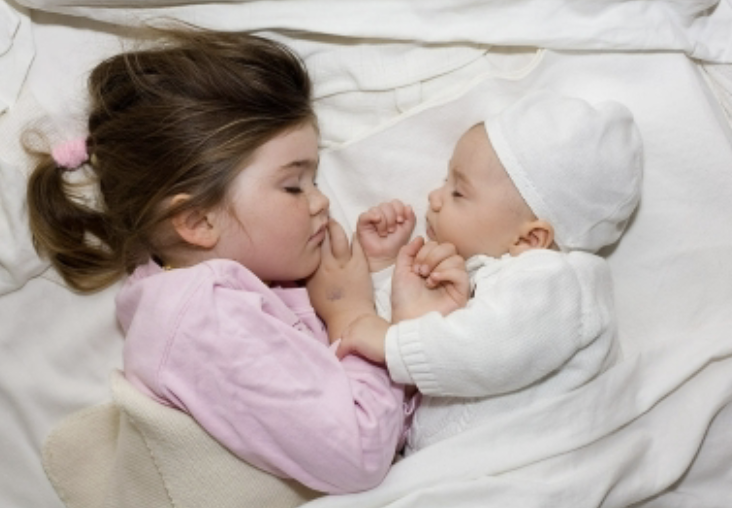
(States of Consciousness) Altered States of Consciousness - Artificially induced altered states of consciousness
Hypnosis
Meditation
Drug-altered consciousness
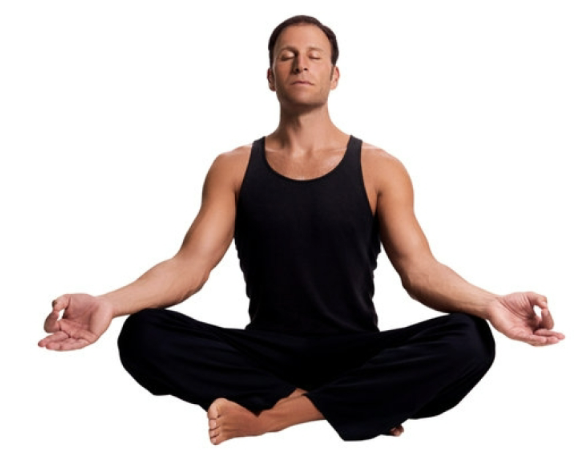
(States of Consciousness) Consciousness and the Brain - Why do we have consciousness?: Reproductive advantage
need to be able to decide who you want to reproduce with
if you are not aware of your environment, how will you decide who you would want to pass your genes onto with?
since consciousness is actively deciding what we want… “you have traits that I want in my children = I want to be romantically involved”
(States of Consciousness) Consciousness and the Brain - Why do we have consciousness?: Long-term planning
society, goals, and planning wouldn’t be here if weren’t aware of our consciousness
(States of Consciousness) Consciousness and the Brain - Why do we have consciousness?: Reading the Behavior of Others
Need to distinguish whether or not a person is upset with you → How will I know if this person is mad at me?

(States of Consciousness) How does the brain create consciousness? - Cognitive Neuroscience
Relationship between brain and cognitive processes
memory, problem-solving, decision making
(States of Consciousness) How does the brain create consciousness? - Brain imaging
fMRI → where blood flow is directed to neurons having more action potentials
(States of Consciousness) How does the brain create consciousness? - Which neural patterns correspond with which conscious processes?
Happy: people that are happy have less activity in the occipital lobe (back of brain, not just for vision!)
Sad: occipital lobe is activated when you reflect/think about something visual (visual memory) → reflecting on old, sad memories (psychologists came to the conclusion that we go from one sad memory to another to keep us sad, creating a snow ball effect)
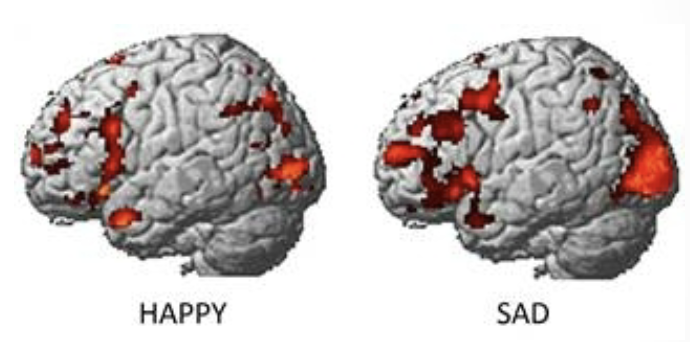
(States of Consciousness) How does the brain create consciousness? - Dual Processing
Two neural pathways — conscious and unconscious
Having different thoughts at the same time, but only being aware of one thought at a time
All thoughts are neurons communicating with one another
Freud couldn’t prove this due to lack of technology, but he was correct as his studies were proven → humans are able to have multiple thoughts at the same time, but we aren’t aware of them
(States of Consciousness) What is PARALLEL PROCESSING?
Our brains process multiple features of visual experience at one and integrate these features
Blindsight!
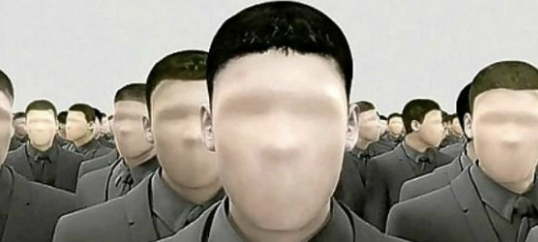
(States of Consciousness) What is SEQUENTIAL PROCESSING?
method of information processing where the brain handles data one step at a time, in a specific, logical order
(States of Consciousness) Selective Attention
focusing of conscious awareness on a particular stimulus
can’t pay attention to multiple things at once
Our senses are bombarded with stimuli (many things that we can focus on in our environment)
We only focus on a small number of these stimuli
(States of Consciousness) Selective Attention - Cocktail Party Phenomenon
Certain stimuli may demand our attention (like our name, vulgar/profane words)
experiment w/ confederates (actors in experiment, except one person) where everyone is talking in groups at a cocktail party and one group is talking across the room and says “John”; John from the other side hears his name and turns around
(States of Consciousness) Selective Attention - Selective Attention & Accidents
your attention is selective to exactly what you want to see
“Walking Distracted” → more people die texting and walking than texting and driving
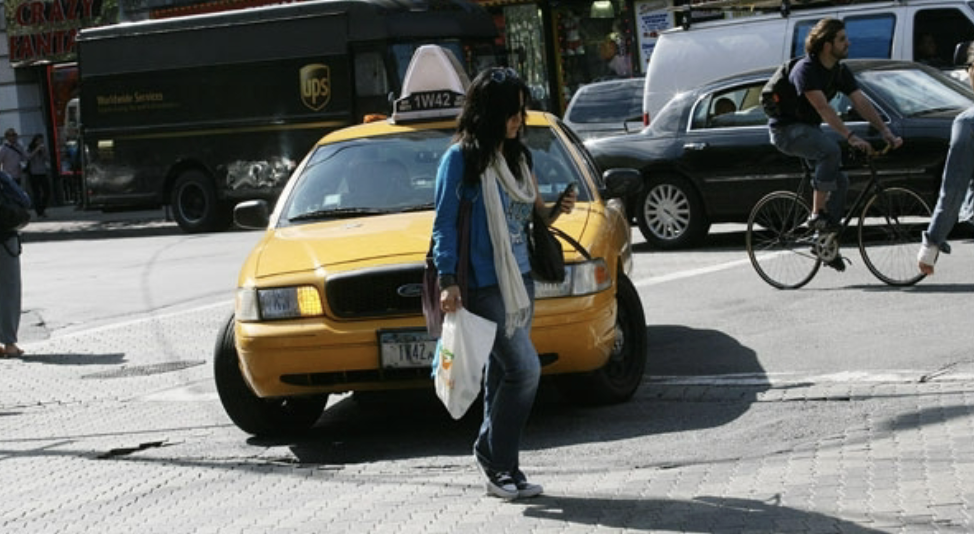
(States of Consciousness) Selective Inattention
Inattention: a lack of attention → can only focus on one thing at a time, so, by default you’re unaware of everything you’re not paying attention to
(States of Consciousness) Selective Inattention - Neisser (1979)
Researcher behind selective attention
When we focus on one thing, we miss out on others
Inattentional Blindness → we’re unaware of what we’re missing out on
(States of Consciousness) Selective Inattention -Choice Blindness
Not only are you unaware of your environment, you can also be blind to the choices you make (an inconsequential choice → no punishment, low stakes)
given face that wasn’t chosen (not given enough time to study face, no consequences so why care?)
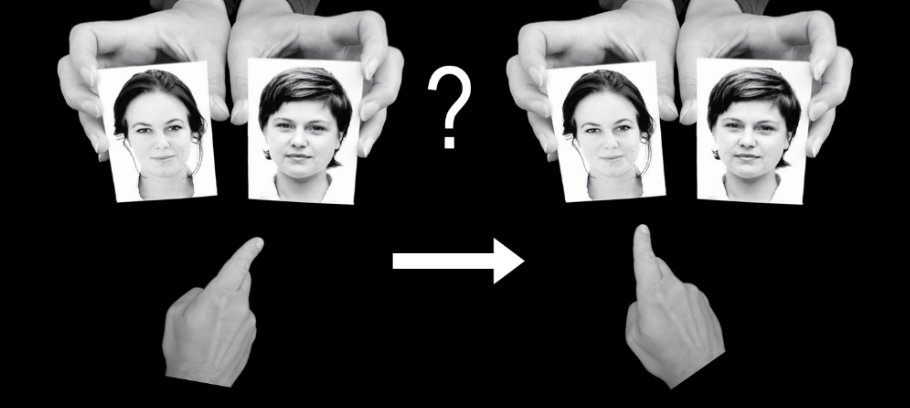
(States of Consciousness) Sleep
We are unconscious, but our brain still active
We keep processing information while we are asleep

(States of Consciousness) Sleep - What is the optimal number of hours of sleep for TEENAGERS? Do they perform well cognitively in the MORNING?
9 hours 15 mins
Teenagers don’t perform as well cognitively in the morning
(States of Consciousness) Sleep - What happens when you get BELOW 6 hours of sleep?
Neurons start dying more frequently, decreasing memory and physical performance
Hard to get back (neurogenesis)
(States of Consciousness) Biological Rhythms and Sleep - Circadian Rhythm
internal alarm clock that helps us fall asleep at the right time
24-hour cycle of biological functioning (when your body should be awake and asleep)
Humans naturally wake with sunlight and sleep when it gets dark
Stimulation of SCN (suprachiasmatic nucleus in hypothalamus)
SCN → pineal gland decreases melatonin
tells us to stay awake by saying it’s daytime
Artificial light
sun v. phone screen → our brain gets sunlight and phone light confused which tells us to stay awake and screws up our circadian rhythm (why we shouldn’t be on our phones before bed)
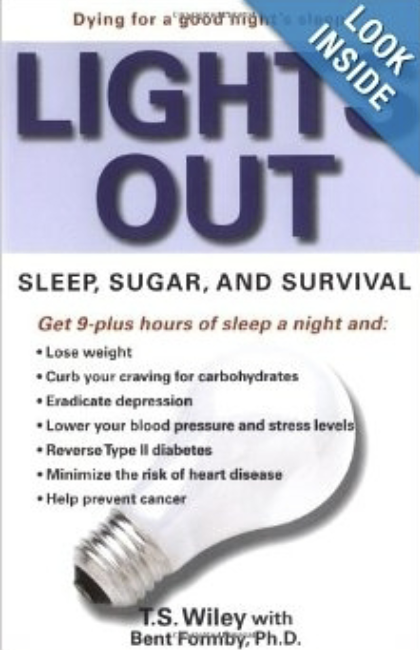
(States of Consciousness) What is JET LAG?
a temporary condition that results from traveling across multiple time zones, causing a disruption in the body's internal circadian rhythms
(States of Consciousness) Sleep Stages: An overview
when you’ve gone through all stages of sleep = full sleep cycle
1 cycle every ~ 90 minutes
Stages: 1, 2, 3, 4, and REM
As night progresses, stages 3 and 4 shorten and REM lengthens
As sleep deepens, brain waves increase in amplitude and decrease in frequency
Some people don’t dream dream?
How to remember dreams
Try having a notes app handy/open on your phone near your bed
Try waking up at a slightly different time → more likely can remember dream if you wake up during REM sleep
20-25% of our sleep time is spent in REM
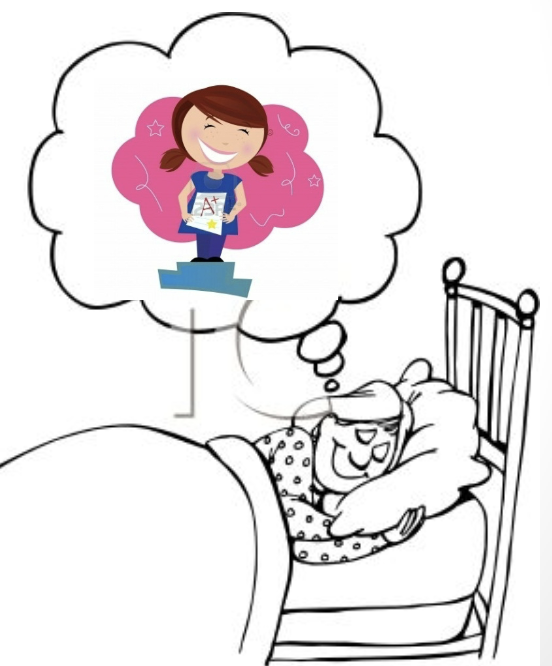
(States of Consciousness) Sleep Stages: The details
Awake and alert/nREM: beta waves dominate, low amplitude, short wavelength
Awake but relaxn/REM: alpha waves dominate (on the cusp of sleeping, shows up while you meditate)
Stage 1 Sleep/nREM: irregular and larger brain waves (theta waves → amplitude is a little taller and more spaced out), heart rate/respiratory rate/blood pressure going down (parasympathetic system is active)
Stage 2 Sleep: larger theta waves, sleep sindles, sleeptalking
Stage 3/4 Sleep/nREM: delta waves, sleepwalking, bedwetting (deep sleep, brain is least active, glial cells active, growth hormones are pumped out)
Stage 5/REM (Rapid Eye Movement): rapid brain waves, dreaming, “paradoxical sleep” (you’re asleep, but biological systems are still active), full body paralysis, eyes dart around while are eyes are closed
“Tossing and turning” → false myth that this means you’re having a bad dream (you can’t move during REM)
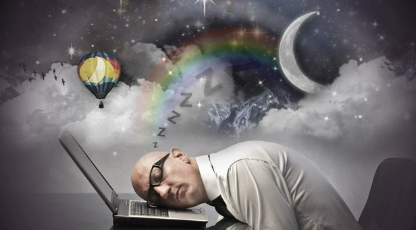
(States of Consciousness) EEG Wave Form
EEG doesn’t produce images BUT produces electrical waves to see how brain is functioning
Can be monitored during sleep
different brain waves during different times of the night
indicates brain activity → shorter the amplitude/wavelength, the more alert/awake you are
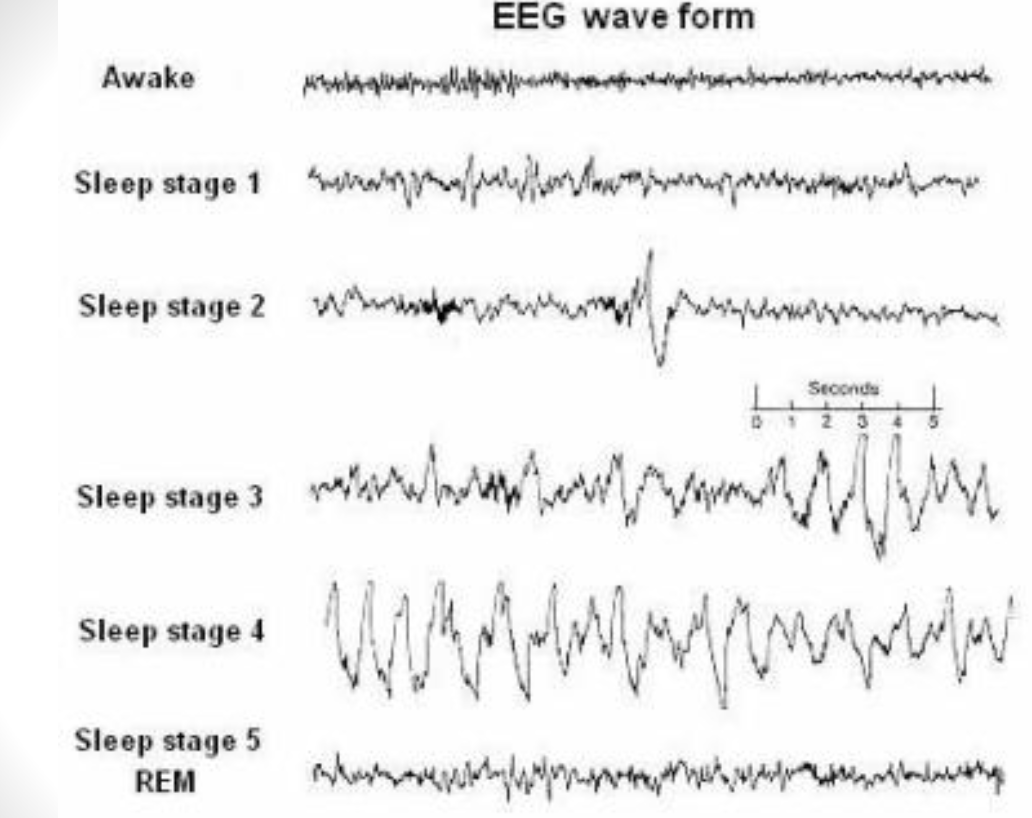
(States of Consciousness) REM Sleep: A Closer Look
REM Rebound: the increase in REM sleep, both in length and frequency, that occurs after a period of REM sleep deprivation
Muscle Paralysis
Sleep-walking and talking (non-REM/”nREM”
REM decreases with age! (negative correlation)
older people tend to wake up during REM, harder for them to go to sleep in REM
Takes a long time to get to the first dream → if only 1 hour of sleep, might not even get to REM
spend less and less time in stage 3 and more and more time in REM
each REM stage is a dream
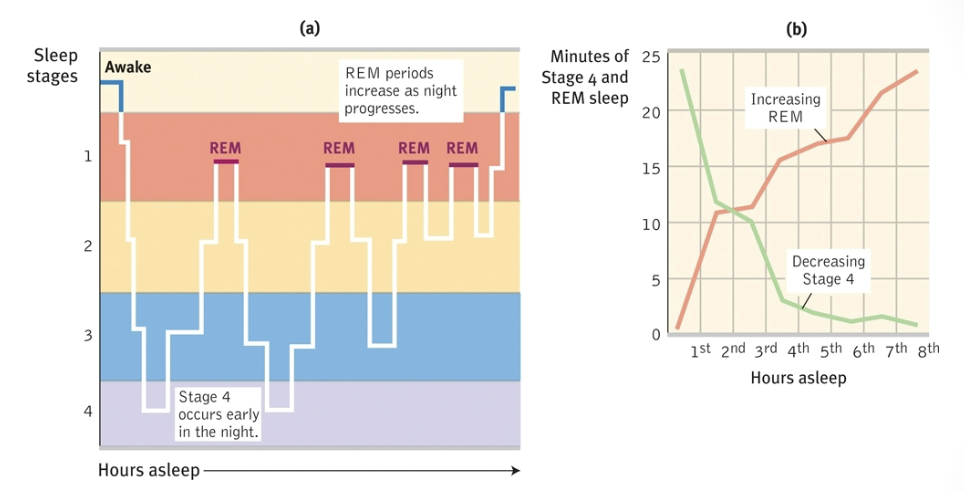
(States of Consciousness) Why do we sleep? - Safety
Theory: we were cavemen and women → can’t see that well at night
Nocturnal animals that are awake and alert at night → if we aren’t walking around and making noise at night, we won’t become prey for these nocturnal predators

(States of Consciousness) Why do we sleep? - Restorative Value (pruning)
Neurons are being damaged during the day BUT then they become repaired during sleep → glial cells repair them
(States of Consciousness) Why do we sleep? - Memory
Memories are formed during sleep
(States of Consciousness) Why do we sleep? - Creativity
Divergent thinking: thinking of multiple solutions → sleeping with a problem, then waking up with a solution → brain was trying to solve it during sleep
(States of Consciousness) Why do we sleep? - Growth
Pituitary releases more GH during sleep
Kids grow during sleep → not good for kids to be sleep deprived
(States of Consciousness) Sleep Deprivation
The condition of chronically getting inadequate amounts of sleep
Difficulty concentrating, fatigue, irritability, unhappiness, obesity, high blood pressure, poor motor performance
William Dement’s studies: studied the effects of REM deprivation, found that REM periods increased dramatically immediately following deprivation (REM rebound), shows we need to REM sleep
More sleep correlates with greater life satisfaction!
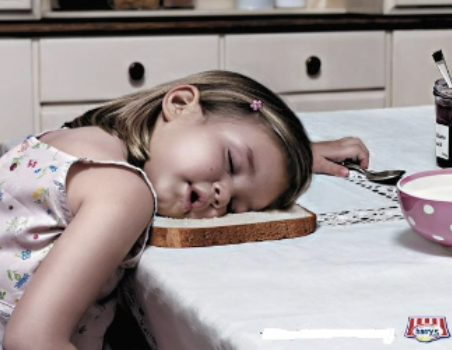
(States of Consciousness) Effects of Sleep Loss - Ghrelin
sleep loss increases ghrelin (the "hunger hormone"), which stimulates appetite, and decreases leptin (the "satiety hormone"), which signals fullness
(States of Consciousness) Effects of Sleep Loss - Cortisol
sleep loss affects cortisol levels, often increasing them in the short term due to stress responses
negatively impacts mood, cognition, and immune function
(States of Consciousness) Effects of Sleep Loss - Disrupting Gene Expression
vital for basic cellular functions, neural plasticity, and health
(States of Consciousness) Effects of Sleep Loss - Limbic System Dominance w/ Food
increases food cravings by amplifying activity in the brain's limbic system, particularly the amygdala, while decreasing activity in the frontal cortex, which is involved in decision-making and impulse control
leads to a stronger desire for high-calorie, sugary foods and can result in increased overall calorie intake and weight gain
(States of Consciousness) Effects of Sleep Loss - Microsleep
a sudden, involuntary episode of a few seconds of sleep with total loss of awareness
(States of Consciousness) Sleep Deprivation - __% of Americans are sleep deprived!
50%
(States of Consciousness) What are HALLUCINATIONS?
sensory perceptions that occur in the absence of a real external stimulus
(States of Consciousness) What are HYPNAGOGIC SENSATIONS?
sudden, involuntary feelings, like falling or floating, that occur during the transitional state between wakefulness and sleep
(States of Consciousness) Sleep Disorders: Insomnia
Inability to fall asleep or remain asleep
“in” = without
“som” = sleep
Prevalence
Cause: Ventrolateral Preoptic Nucleus (VPN)
Located in the hypothalamus
Inhibits the feeling of wakefulness (keeps you asleep)
Age
VPN can either be diminished in size or it doesn’t work properly → VPN shrinks with age
Treatments: prescription treatments (varying efficacy → works depending on person)
Hypersomnia - excessive daytime sleepiness

(States of Consciousness) Sleep Disorders: Insomnia - What is the technical term for SLEEP WALKING?
somnambulism
(States of Consciousness) Sleep Disorders: Insomnia - What is SLEEP HYGIENE?
dimming exposure to artificial light, etc.
(States of Consciousness) Sleep Disorders: Narcolepsy
Sudden lapse into sleep → against person’s control, going to fall asleep uncontrollably, not restful/relaxing, into REM, falling over
Sleeping episode is usually brief (~5 minutes)
varying severity (every hour vs. 2/week)
Cause: Correlation with a lack of neurotransmitter orexin (produced in hypothalamus)
Unknown cause (genetics?)
Drugs can help, but no cute
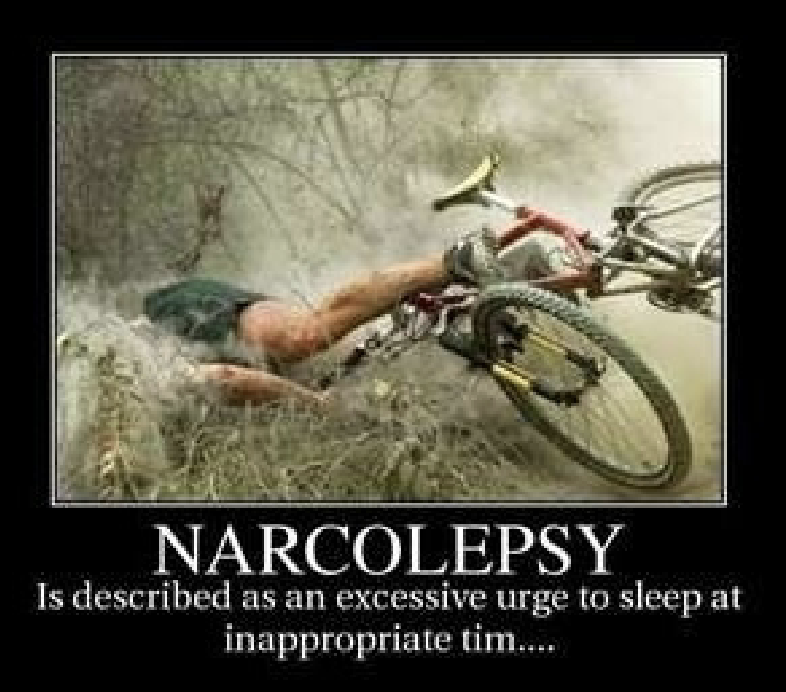
(States of Consciousness) Sleep Disorders: Narcolepsy - Narcolepsy in animals?
when excited (usually)
(States of Consciousness) Sleep Disorders: REM Sleep Behavior Disorder
a parasomnia characterized by the loss of muscle atonia during REM sleep, leading to physical actions like kicking, punching, or yelling during sleep
(States of Consciousness) Sleep Disorders: Sleep Apnea
Temporary cessation (stop) of breathing during the night (can mean snoring, but not always)
Daytime symptoms: irritability, fatigue (despite sleeping a lot)
Positive correlation between sleep apnea and obesity
Central: issue w/ brain (Reticular Formation), need surgery
Obstructive: issue with air passage in throat (not brain)
Treatments:
CPAP (Continuous Positive Airway Pressure) Machine: forces air through nose to maintain steady air flow, keeping you breathing
Surgery
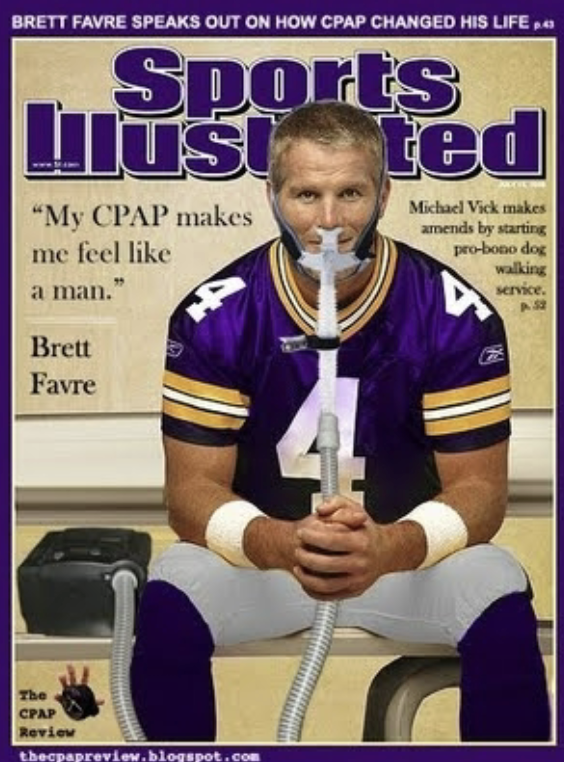
(States of Consciousness) Sleep Disorders: Night Terrors
Uncontrollable arousal and screaming without the ability to be awakened
shaking, screaming, flailing (looks awake w/ eyes open, but not awake)
NIGHT VIOLENCE
causes distress for those around
can’t remember, non-sensical
Most common in young children (who sleep more and spend more time in stage 3/4) and adults (increases likelihood) on drugs
Occur during stage 3 and 4 (non-REM) sleep → person is moving around a lot
Sleep terror ≠ nightmare

(States of Consciousness) Sleep Disorders: Sleepwalking (Somnambulism) and Sleeptalking
Individuals walk and talk while asleep and have no recollection of this in the morning
Occurs in Stage ¾ of sleep
Genetic component?
More common children (they stage in stage 4 relatively longer)
Usually return to bed (usually go to kitchen/bathroom)
MIGHT respond, disoriented
Some sleep medications heighten these sleep disturbances (sleep moving, sleep driving)
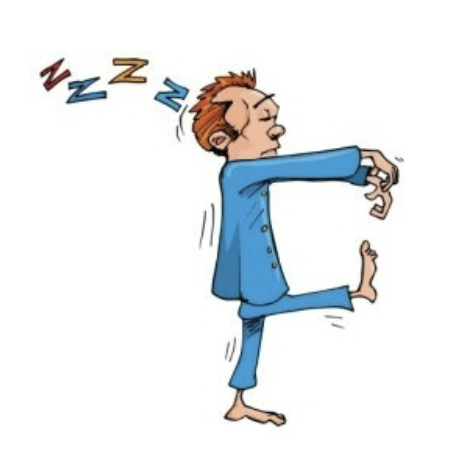
(States of Consciousness) Dreams
Occur in REM sleep
Sensory stimuli (smells, sounds, etc.)
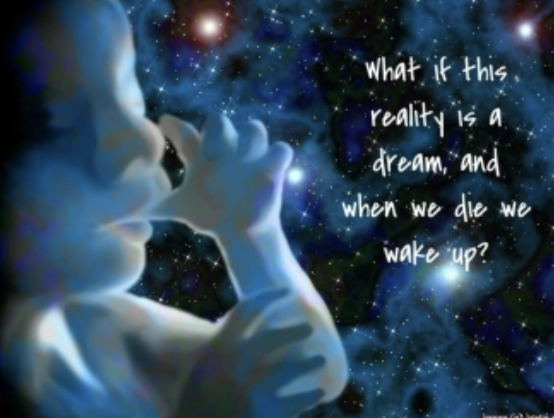
(States of Consciousness) Dreams - ~_ years of an average person’s life will be spent dreaming! (when you sleep 8 hrs/night)
6
(States of Consciousness) Dreams - What is MANIFEST CONTENT?
the storyline the dream follows (often reflects our experiences and worries) → what happens in your dream
(States of Consciousness) Theories of Dreaming - Wish Fulfillment (Freud)
Manifest vs. latent content (no scientific evidence)
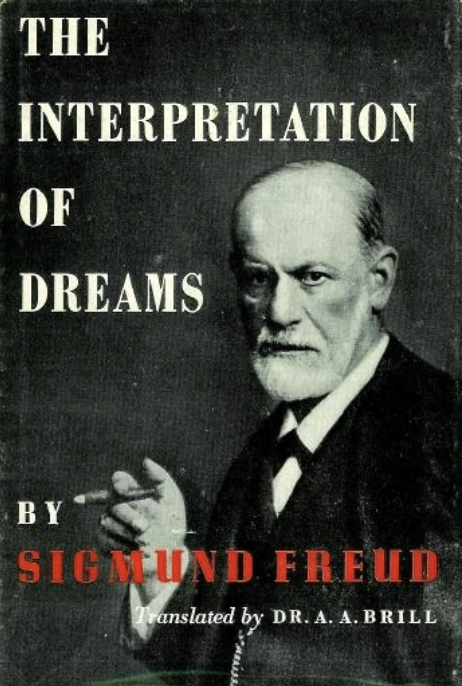
(States of Consciousness) Theories of Dreaming - Information Processing
“file away memories”
dreaming is a way the brain processes and sorts information from the day to consolidate memories
(States of Consciousness) Theories of Dreaming - Physiological Function (Crick and Mitchison)
“mental housekeeping”
“prune and preserve” neural pathways
dreams serve a biological purpose by stimulating neural pathways to help develop and preserve the brain's circuits since we form neural networks throughout the day and must decide which ones to keep
sorting from information processing Theory
(States of Consciousness) Theories of Dreaming - Activation Synthesis (Hobson & McCarley)
proposes that dreams are the brain's attempt to make sense of random neural activity that occurs during REM sleep
Please see case reading
(States of Consciousness) Theories of Dreaming - Cognitive Development (Cartwright)
dreams are the continuity of waking thought, serving as a cognitive mechanism for emotional regulation
help process and cope with recent, emotionally significant experiences by replaying them in a way that links them to past memories
Please see case reading
(States of Consciousness) Theories of Dreaming - Note: __________ and _____________ theories of dreaming work together.
Biological
psychological
(States of Consciousness) Meditation
Focus attention and promote relaxation → anything that improved moos + relaxation
Purposeful attempt to alter consciousness
Alpha waves dominate → when getting ready to sleep, relaxed, sleep
Parasympathetic nervous system
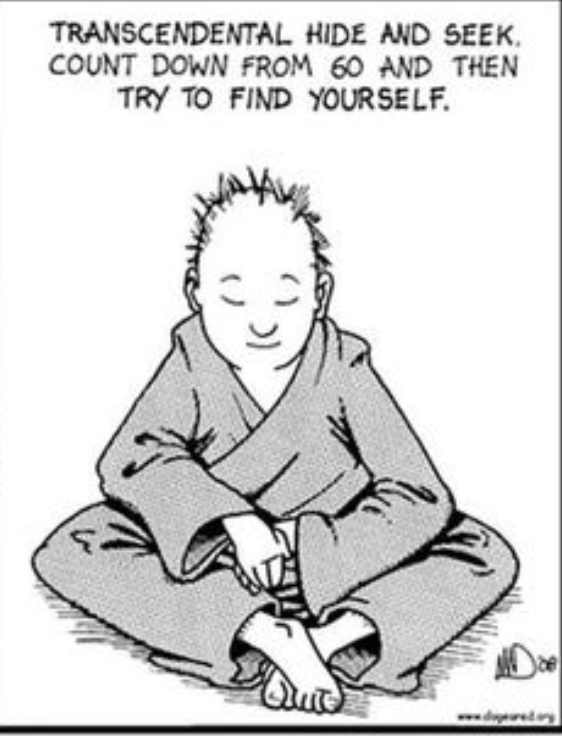
(States of Consciousness) Meditation - Concentrative Meditation
boost attention
Zen: controlled breathing [into steps], no one knows you’re doing it → 5 secs inhale, hold 5, exhale 5 seconds
Transcendental: repetition of a mantra (sound/word/phrase → “Om”, buddhist)
Sufi: Frenzied dancing and chanting
popular in ancient Persia, spinning/movement
(States of Consciousness) Drugs and Consciousness - What are PSYCHOACTIVE DRUGS?
chemicals that influence the brain, alter consciousness (affects thoughts/behaviors), and produce psychological changes
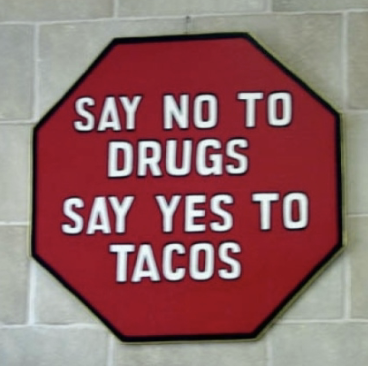
(States of Consciousness) Drugs and Consciousness - What are CULTURAL NORMS?
Drug abuse/recreational use
abuse in one culture isn’t in another
Ex> In America alcohol = normal, Muslim countries = weird looks when ordering alcohol
(States of Consciousness) Drugs and Consciousness - What is TOLERANCE? What is NEUROADAPTATION?
Tolerance: need to take increasing amounts of drug in order to get effect
neuroadaptation: brain gets adapted and needs drug to function normally
Ex> no effect after drinking one coffee cup for 182 days in a row
(States of Consciousness) Drugs and Consciousness - What is WITHDRAWAL?
body can’t function without drug → foggy, vomiting, can’t pay attention
Ex> headache without coffee in morning → can’t do school/work
Physical addiction (we abuse caffeine in US)

(States of Consciousness) Drugs and Consciousness - What is PSYCHOLOGICAL DEPENDENCE?
part of routine, feel on edge/snappy/something off without drug
Ex> 2 glasses of whiskey on ferry home from work everything
(States of Consciousness) Drugs and Consciousness - Addiction results when continued use is necessary to prevent _________.
withdrawal
(States of Consciousness) Types of Drugs: Depressants
Depress CNS (brain and spinal cord) → slows neural activity and body functions (time between action potentials is longer)
Leads to Withdrawal

(States of Consciousness) Types of Drugs: Depressants - Alcohol
Increase in mood
Lowered inhibitions (stop us from making bad decisions)
Ex> army crawling out of prom; usually I wouldn’t _____ but now that I have alcohol, it doesn’t seem like a bad idea)
Slowed neural processing
Memory disruption: brain shrinks!
b/c neurons/cells die fast, alocohol inhibits function in hippocampus in charge of memory
Alcohol and poor sexual behavior (teen pregnancy)
(States of Consciousness) Types of Drugs: Depressants - Alcohol: Vogel-Sprott Study
Beer w/ cognitive tests vs. fake beer (placebo)
Beer: drunk, but not acting as bad
Fake Beer: acted more drunk, placebo effect (expectations)
(States of Consciousness) Types of Drugs: Depressants - Alcohol: Korsakoff’s Syndrome
(created by lack of B1) → rlly red nose, circulation cut off, alcohol prevents absorption of vitamins (B1), blood vessels rupture around nose
(States of Consciousness) Types of Drugs: Depressants - Alcohol: Barbiturates and Tranquilizers (benzodiazepine)
anti-anxiety, do what alcohol does but slows you down mentally even more
Ex> Hendrix choked to death on vomit after abusing barbiturates because brain was too slow to wake up
(States of Consciousness) Narcotics (aka opiates)
Depressants (slow CNS) that relieve pain and induce sleep
Opium, morphine (medical benefits), heroin, laudanum
come from poppy plant (milky white substance distilled from slicing outside of plant, common in Middle East)
Super-stimulat endorphin receptors
Highly addictive (opiates → after back surgery, doctors need to be careful)
Withdrawal: chills, sweating, anxiety, loss of bowel control, spasms
Death from overdose is possible
Ex> woman tests positive for opiates when trying to work for Goldman Sacks, sues, test traced residue from poppy seed bagel eaten that morning
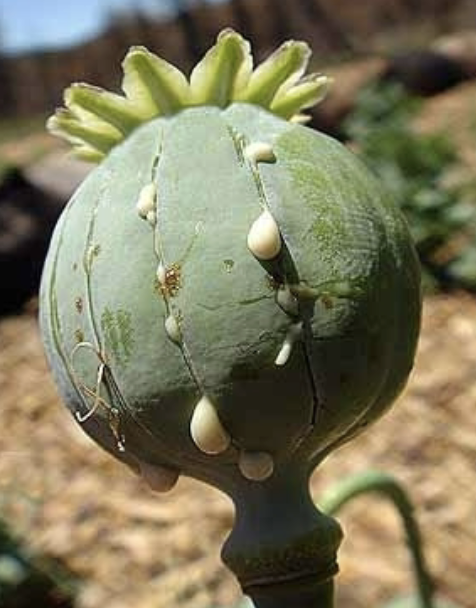
(States of Consciousness) Stimulants
Increase central nervous system activity and speed up body functions; trigger sympathetic nervous system (increased heart rate, faster action potentials, less time resting potentials)
(States of Consciousness) Stimulants - Methamphetamine
Euphoria (extreme sense of happiness, unhealthy) - dopamine
Withdrawal: psychosis?
SUPER addictive (20/10 :) w/ drug, 10/10 :) w/o drug → :()
(States of Consciousness) Stimulants - Nicotine
Euphoria - epinephrine
Hunger and alertness
Stimulates release of dopamine (very addictive)
Withdrawal: weight gain?
(States of Consciousness) Stimulants - Caffeine
Alertness, increased metabolism
Withdrawal: fatigue, headaches
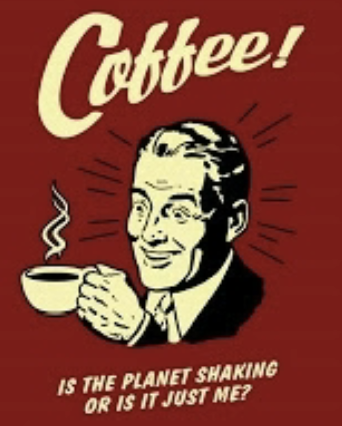
(States of Consciousness) Stimulants - Cocaine
Euphoria → crash
Dopamine agonist
Withdrawal
Super addictive
(States of Consciousness) Stimulants - MDMA (Ecstasy, “Molly”)
Stimulant and mild hallucinogen (senses)
Triggers release of serotonin and prevents its reuptake
Destroys serotonin-producing neurons → permanent depression
Suppresses immune system
increases mood (short term for a couple of hours), weeks after taking it continuously causes mood to be suppressed
Ex> kid smiling in class all the time, chewing napkin w/ Vitamin C tablet to avoid suppression of immune system as an antioxidant)
(States of Consciousness) Hallucinogens
(1 of 5 senes)
Drugs that alter perceptions of reality and distort sensory and perceptual experiences
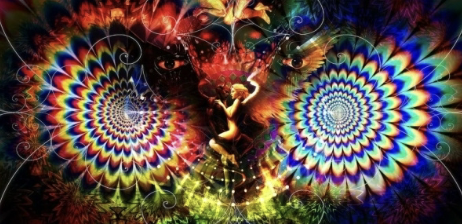
(States of Consciousness) Hallucinogens - LSD
rlly powerful, clear odorless liquid, room spinning, people in corned
Derived from specific fungus
Timothy Leary → too powerful
Euphoria, hallucinations, sensory and mental distortion
Lasts for hours
(States of Consciousness) Hallucinogens - PCP
numbs you to pain → overconfident and aggressive (Ex> run over police, shot but keep running)
Loss of contact with reality, aggression, insensitivity to pain
Binds to potassium channels in brain and muscle activating neurons
High psychological dependence
(States of Consciousness) Hallucinogens - Marijuana
diff food sensations, music sounds diff
Euphoria, relaxation, hallucinations
Lasts for hours
Low physical addiction, moderate psychological additction
Impairs motor skills and perception, may trigger paranoia, disrupts memory, intensifies sensory experiences
Legal in NJ
schedule 1 drug → harshest penalties
(States of Consciousness) Why do some people use drugs? - Nature
Hereditary tendencies
Neurotransmitter deficiencies may predispose one to use
Self-medication of disorders?
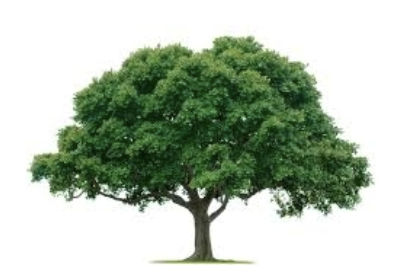
(States of Consciousness) Why do some people use drugs? - Nurture
Psychological: life is meaningless, stress, depression
Social: Peer pressure (aka hooligans), rebellion and thrill-seeking, seeking a clique with similar interests can reinforce drug use or aid in quitting
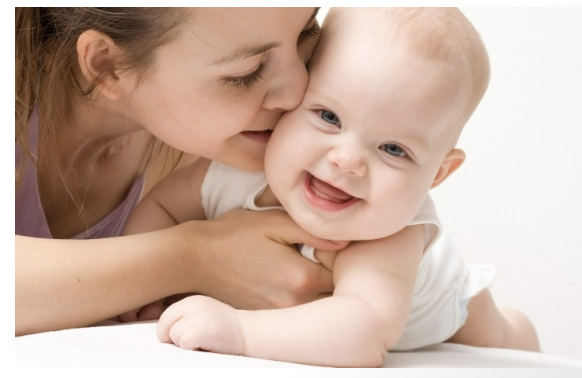
(States of Consciousness) Near Death Experiences
Altered State of Consciousness
Temporal Lobe Seizures
Oxygen deprivation
Hallucinations?

(Sensation and Perception) Sensation vs. Perception - Psychophysics
The study of the relationship between physical stimuli and our experience of them.
(Sensation and Perception) Sensation vs. Perception - What is SENSATION?
The experience of sensory stimulation (how do our 5 senses work)
e.g. “I see something.”
(Sensation and Perception) Sensation vs. Perception - What is PERCEPTION?
Creating meaningful patterns from raw sensory information
e.g. “I see a dog.”
(Sensation and Perception) Two Types of Processing - Bottom-up Processing (data-driven)
Beginning with stimulation of our senses, we interpret sensory information with our brains
brain is gathering clues, facial analysis, collecting data to figure out what you’re looking at
e.g. I see a furry, 4-legged creature with a tail and identify this as a dog (brain doesn’t immediately recognize dog); looking at Beck'y’s features (nose, distance between eyebrows, etc.)
(Sensation and Perception) Two Types of Processing - Top-down Processing (schema-driven)
Using our schemas, expectancies and past experiences, we interpret sensory information to construct deeper meaning
using past experiences to make meaning of what you’re looking
The dog is growling and foaming at the mouth and I realize it may have rabies so I will not approach it
Ex> comparing features of Becky’s face to what you’ve seen before
(Sensation and Perception) Sensation: The Basics - What are RECEPTOR CELLS?
Specialized cells (specialized to only generate certain experiences → auditory, visual) that respond to a particular type of energy and receive incoming sensory info
These exist in your sense organs
(Sensation and Perception) Sensation: The Basics - What is the Law of Specific nerve Energies (Muller)?
One-to-one relationship between stimulation of a specific nerve and the resulting sensory experience
For example, applying pressure with your finger to your eye results in a visual experience by stimulating receptor cells
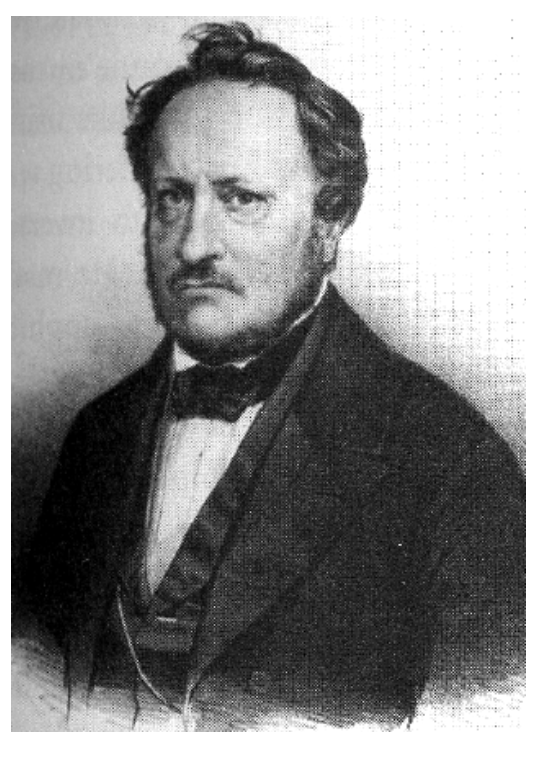
(Sensation and Perception) Sensory Thresholds - Absolute Threshold
The minimum amount of energy that can be detected 50% of the time
E.g. At what point can you hear the presence of a sound?; how long do I need to see a word to understand → 50% of people should see the word?; if Mr. D’Elia standing outside on dark night, how bright should light be to detect it a mile away
(Sensation and Perception) Sensory Thresholds - Sensory Adaptation
An adjustment of the senses to the level of stimulation they are receiving
toothpaste/orange juice phenomenon
eyes adjust to less light coming in when lights are shut off, so they become more sensitive to light
(Sensation and Perception) Sensory Thresholds - Difference Threshold
The smallest change in stimulation that can be detected 50% of the time (aka just noticeable difference/JND)
e.g. At what point can you tell that the TV volume has been raised?; how much weight has to be added to a textbook for the difference to matter
(Sensation and Perception) Weber’s Law
States that the difference threshold is detected by a constant minimum percentage of the stimulus, not a constant amount
e.g. to detect a difference in weight, the change must be 2% (piece of paper isn’t enough) of the original stimulus’ weight
2% change in brightness, we can detect it 50% of time
1 lb to 10 lbs → 10% change → 50% of people detect
1 lb to 100 lbs → 0.01% change → 50% of people don’t detect
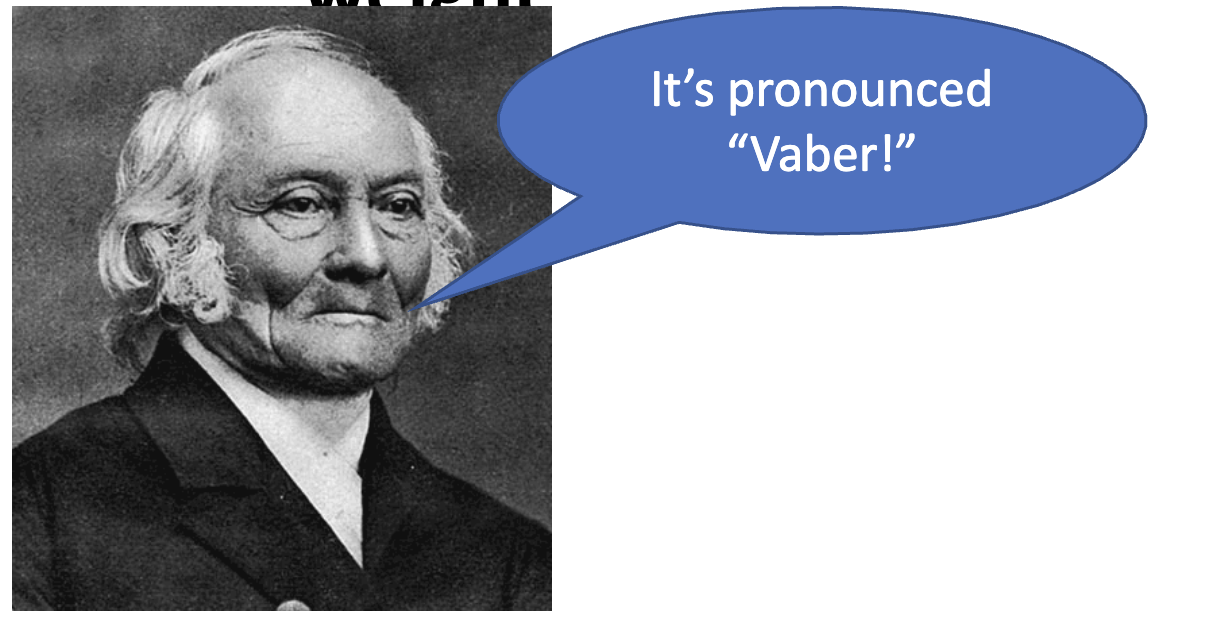
(Sensation and Perception) Subliminal Perception
we respond to stimulus we don’t realize consciously
We know that below threshold (subliminal) stimuli bombard us regularly…
Ex> hidden images: Amazon logo, Toyota, FedEx, Baskin Robbins
BUT…do we respond to these stimuli that are below our level of awareness?
Controlled laboratory studies only?
Subliminal Advertising Experiment: seeing an Apple logo and coming up w/ more creative uses for a brick than when we see IBM logo
(Sensation and Perception) Subliminal Perception - What is PRIMING?
The often unconscious activation of certain associations for the purpose of altering perception, memory or respond
Individuals flashed a pleasant or unpleasant image before viewing a photo of a person were influenced to judge the person positively if they saw a pleasant picture and negatively if unpleasant